The La Sportiva Jackal is a trail runner that wears more like a hiking shoe than a shoe designed for mountain running. While it has many of the properties of a trail runner, including well-draining mesh uppers, a wide toebox, and a sticky rubber sole, the Jackal offers a level of foot protection and durability that is rarely found on most trail runners. In addition to a burly front toe-kick, the Jackal has a shoe-length rock plate and extra cushioning so you can hike or backpack all day in rocky or mountainous terrain. The Jackal’s sizing runs small, however, so size up a half to a full size.
Specs at a Glance
- Gender: Men’s (women’s also available) – a GTX version is also available
- Drop: 7mm
- Stack heel: 29mm
- Stack front: 22mm
- Lug depth: 3 mm
- Cushion: medium+
- Closure: lace-up
- Upper: mesh
- Rock guard: yes
- Weight: 21 oz/pair
Sizing

The La Sportiva Jackal runs wide even in a regular-sized shoe. In the past, La Sportiva trail runners tended to run narrow, but these are just the opposite. They do run small, however. I normally wear an EU 44.5 and take an EU 45.5 in the Jackals.
La Sportiva sizes their shoes using European sizes, which are finer grained than US sizes, so you can dial in a more precise fit. With the Jackals, I’d order a bunch of different adjacent sizes and pick the one that fits you best.
The Jackal comes with a cheapo foam insole, which has very little arch support. I replace them with third-party insoles that have a higher arch and there’s plenty of room inside the shoe to accommodate them.

Wide Toe Box
The Jackal toe box is really wide and on par with Altra Lone Peaks but also has more vertical toe space. When I wear them, my pinky toe does not touch the outside of the shoe, so my toes can fully splay inside. I’m working through a mild case of Morton’s Neuroma (nerve pain), which is caused by tight-fitting shoes, so finding a shoe with a wide toe box has been priority for me.
Mesh Uppers
The Jackal is not a waterproof trail runner, although a GTX version is available. Its mesh uppers are made using the new fine-grained mesh that La Sportiva has started using in other shoes, including the Ultra Raptor II, which we also reviewed recently.
This mesh drains well and has much smaller holes than earlier versions that La Sportiva has used. This is important for stream crossings if you like to march through them without taking your trail runners off. The smaller holes don’t let sand and grit from the stream bottom get into your shoes, which makes your socks last much longer. It really sucks when you blow through all of your socks on a multi-week backpacking trip with little chance of replacing them.
Toe Protection

The Jackal is very well-protected with a beefy toe kick and thick bumpers along the sides of the toe box. I’ve found that La Sportiva makes trail runners with much more protection than other brands, which is the reason I decided to try another one of their trail runners. I’ve tried other shoes from Topo and Altra this summer and haven’t been disappointed by the amount of toe protection they provide.
Full-Length Protection
The Jackals also have a rock plate that extends the full length of the shoe, not just under the ball of the foot. There’s extra cushioning throughout the sole, which provides further protection, but does reduce trail feel somewhat compared to a trail runner with less cushioning. I got used to it pretty quickly, but it’s a very different trail feel than a much thinner sole. That’s why I say the Jackal feels more like a hiking shoe and less than a minimalist trail runner.
Durability
I’ve been using trail runners for hiking for over 10 years and durability has never been their strong suit. Maybe it’s just the climate or terrain that I hike and backpack in, but I usually go through three or four pairs a year. In particular, the mesh uppers along the sides of the toe box develop holes from abrasion. It’s happened to me many times with shoes from multiple manufacturers.

The Jackals have a fix for this toe box abrasion. The sides of the toe box are covered with TPU with drain holes to let water out. This helps prevent the mesh from getting ripped up by abrasion and forming holes. So far, the Jackals are holding up well and I’m encouraged that La Sportiva decided to address the issue in this lightweight way.
Drop
With a drop of 7mm, the Jackal is not a zero drop shoe and they’re decidedly not fashionable in that respect. On the flip side, it means that these trail runners are very easy to transition to if you’ve been wearing hiking boots or mids and want to try a trail runner to see what it’s like. You can literally put them on and start hiking without having to learn or train your feet and calves in the biomechanics of hiking in zero-drop shoes. It also makes switching back to boots much easier when winter rolls around and you need to wear insulated footwear. Personally, I care a lot less about drop height and a lot more about toe box width.

Soles
The Jackal sole is made with the same soft and sticky rubber La Sportiva uses on their other trail runners and the grip is just fabulous, even on wet rock. The lugs however are on the small side and are only 3mm in length. This will retard their traction in mud, which is something to keep in mind. The sole is not entirely flat, but curved from the back of the toe box forward, reducing the amount of effort required for a brisk walk.

Heels
The Jackal’s heels are quite firm with lots of added protection along the side and pack. I’ve seen comments complaining that they cause blisters, but I haven’t had that experience at all. I do like the little indentation in the heel that locks my foot in place and prevents heel lift.
The Jackals do not have a rear gaiter trap, so you’ll have to add some velcro if you want to use strapless Dirty Girl Gaiters (since the soles are flat). There’s also no gaiter ring up front or even a lace pocket. They’re pretty vanilla that way.
Recommendation
La Sportiva’s Jackal Trail Runners are great hiking shoes if you want a trail runner with a wide toe box that has much more protection and cushioning than a more minimalist shoe. While they have all of the must-have properties of a trail running shoe they feel a lot more substantial with a full-length rock plate and more cushioning than other trail runners. I think they make an interesting alternative if you’ve been looking to switch to trail runner or you want a pair that has a sturdier feel.
Disclosure: The author owns this product.
Compare 5 Prices
-
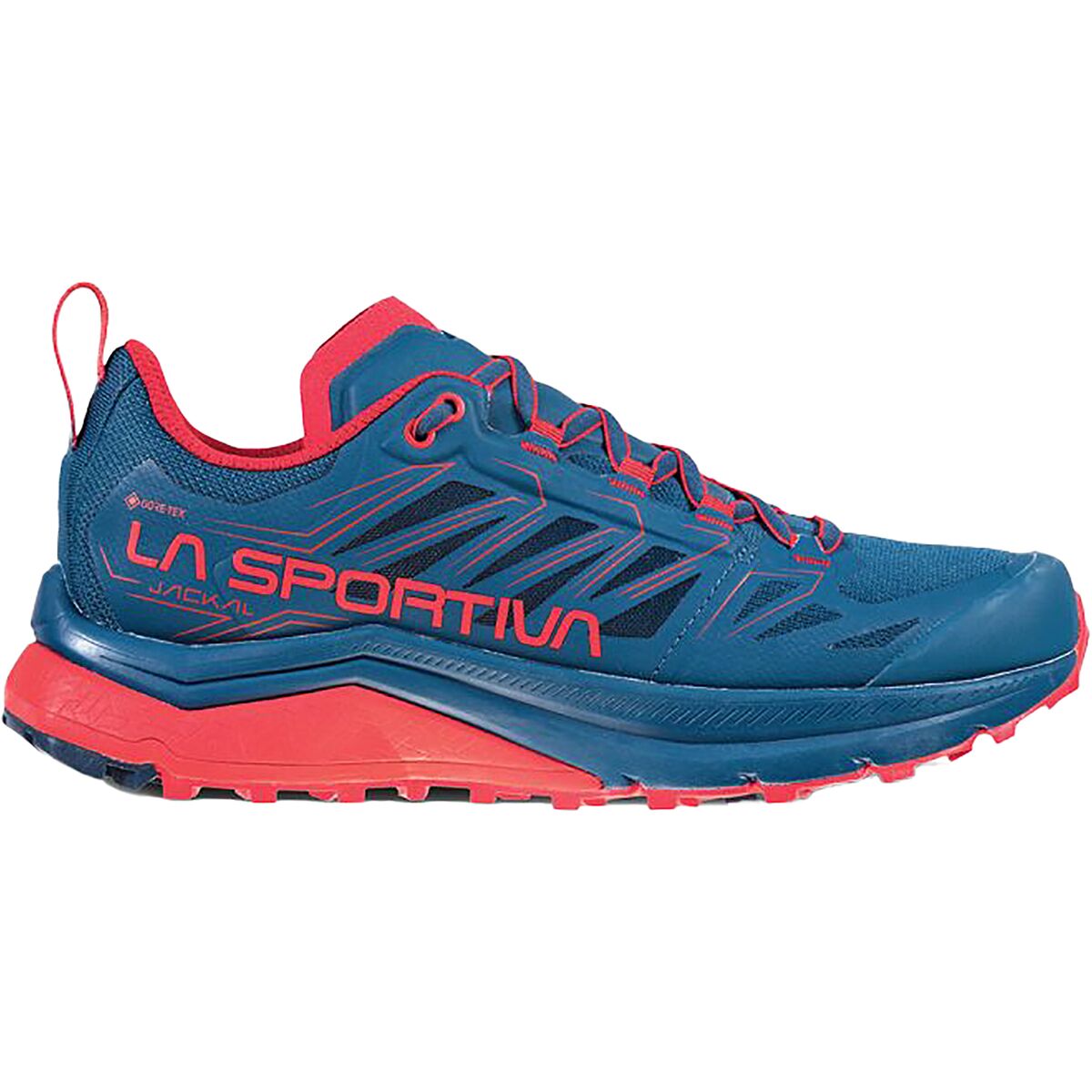
 Backcountry.com
Backcountry.com$170.00$59.50View -
 REI
REI$175.00$69.83View -
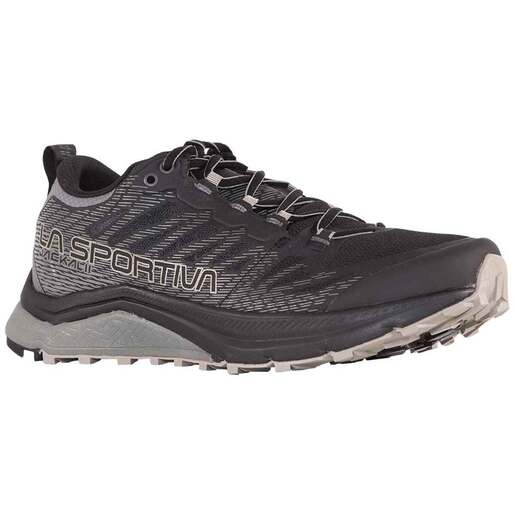
 Sportsman's Warehouse$83.92View
Sportsman's Warehouse$83.92View -
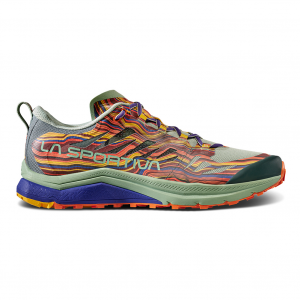
 La Sportiva$175.00View
La Sportiva$175.00View -

 Amazon US$185.00View
Amazon US$185.00ViewAmazon.com Price: $185.00 (as of 04/19/2024 11:27 GMT-0400) Details
Product prices and availability are accurate as of the date/time indicated and are subject to change. Any price and availability information displayed on Amazon.com at the time of purchase will apply to the purchase of this product.
-
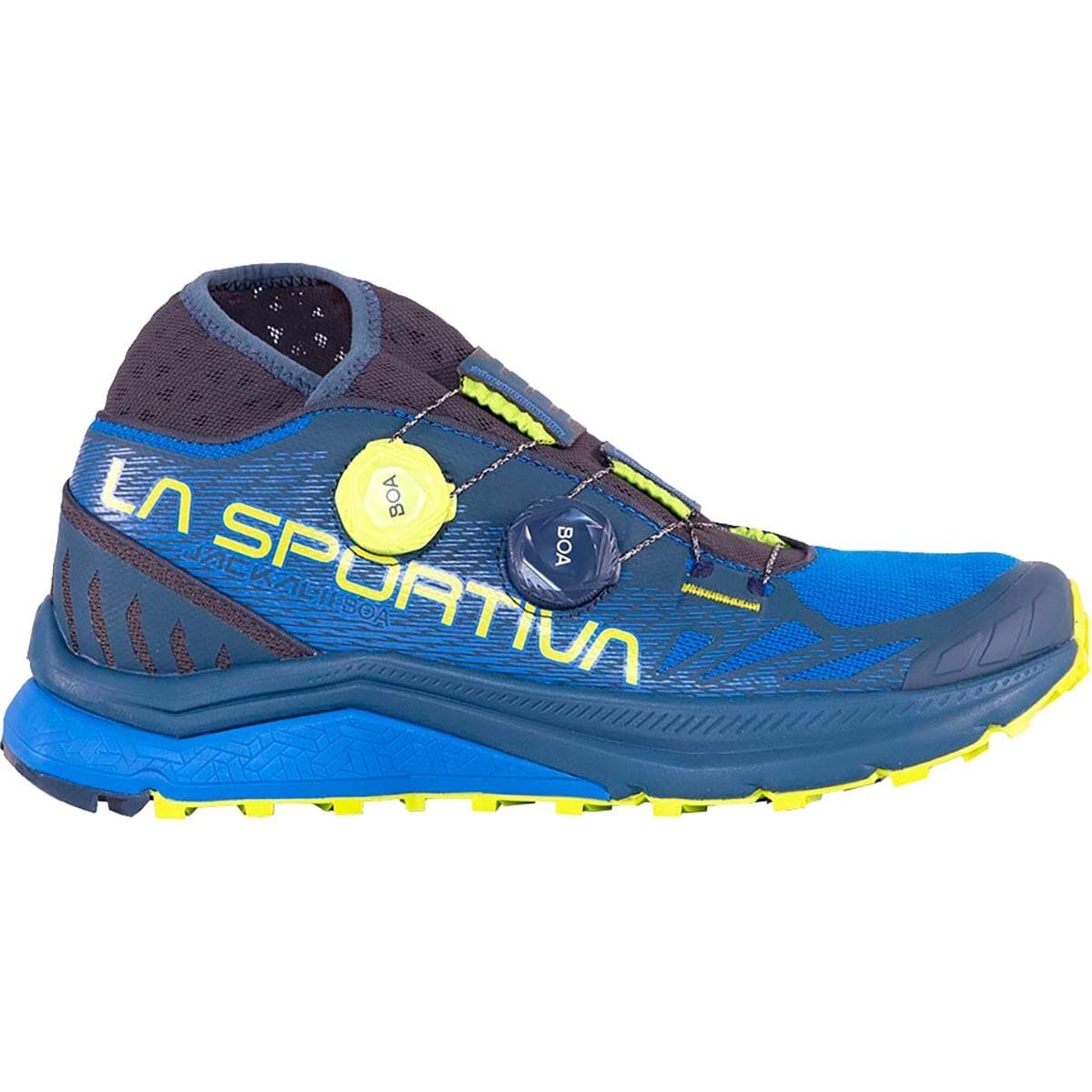
 Backcountry.com$185.00View
Backcountry.com$185.00View
 SectionHiker.com Backpacking Gear Reviews and FAQs
SectionHiker.com Backpacking Gear Reviews and FAQs 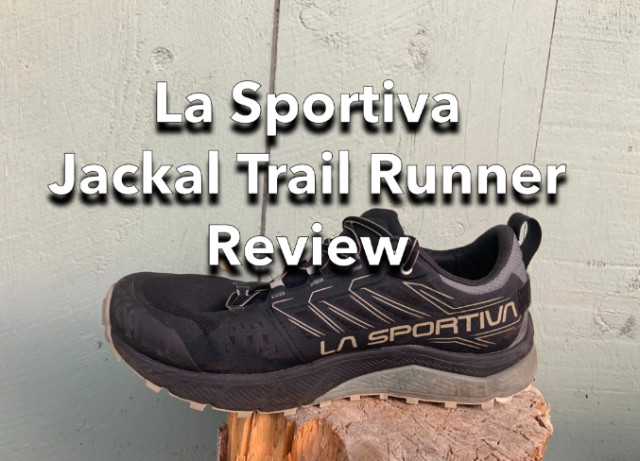

Dang, I really want to try these. What’s the heal cup like? Is it soft or firm? I have really narrow heels and hard heel cups rip up my heels so I can’t even entertain the possibility of a hard heel cup.
Firm but not irritating. The women’s models seem to be very inexpensive at the moment.
Inexpensive for the tiny sizes left in stock…not my size even though I do have small feet. Thanks!
Just wondering if the Jackals fit like the Raptors except wider. I have a pair of Raptors size 11 1/2 and the length ok but they are a little tight on the sides on long or hot hikes so I stopped wearing them.
The jackals are much wider throughout. They’re even wider than the Raptor II GTX in a size wide.
Hi,
I have lone peak 6, but I find that the foot is not well maintained in the wide toebox :
My foot is wide but not thick, and the lacing is only for the ankle and not for the toes, so the shoe can twist around my foot, dangerous for ankles…
So, Jackal or Ultra Raptor ?
Thanks a lot :-)
Don’t know what to suggest – try them both.
I’m always on the hunt for new trail shoes and ordered a pair. Unfortunately, I did not heed the advice to order a size up, so I’m returning them for a size that I hope will fit. They were also surprisingly narrow, so I’m hoping that sizing up will also take care of that.
Ahhhh. Full size up is much more like it! They feel terrific.
I’m curious what is life expectancy of the soles in terms of miles (mostly in the White Mountains)?
I realize it depends on the person and the terrain, but, as I’ve transitioned from mids to trail runners, I am finding I am barely getting 175 miles out of the shoes as the mid-sole lugs are completely worn down and are dangerous on descents. For example: I purchased Topo Terraventures for hiking the Arizona Trail and had to replace these at 180 miles. The replacements, Solomon X Ultra 4s have about 150 (Arizona + White Mountain) miles and the lugs are also worn down (although nowhere near as bad as the Topos). Am I expecting too much from lighter trail runners?
That is pretty low mileage. I usually get about 250 miles out of a pair of Sportivas in the Whites before the heel wears down and I pronate excessively. Let’s face it – trail runners are not as robustly made as other shoes. They’re disposable and not resoleable. etc. But it sounds like you have a special talent for destorying them!
Phil,
Have you put any miles in the Hoka 11 SG-4’s? You didn’t pen that review last year but I would be interested to know how these LaSportivas compare from a comfort point of view.
I am NOT a trail runner but love the Hokas for hiking, but these seem to have more appealing hiking qualities (not as much pillow and more heel-toe drop).
Thanks
I just bought a pair of Hokas this week to try. Mafete Speed 4’s. I also tried some speedgoats last year but thought they were too cushioned for my taste. But I can tell you immediately that the jackals are more solid feeling. They’re cushioned but its a much harder cushioning if that makes sense.
Thanks Philip, another excellent review! I also prioritize toe box width. My feet have widened over time, and living out in the tropics feet swell even more. La Sportiva has always made very high performing trail shoes/hiking shoes, however they are far too narrow in my opinion. The Jackal is the first to be reasonable width (other than the Ultra Raptor GTX which now comes in Wide). My only gripe with Jackal is the very low cut ankle, which offers noticeably less stability over rocky terrain. Keep up the great reviews!
Sorry, late to the show here….
I’m trying to replace my La Sportiva Akyra which have been discontinued. I ended up with Akyra because I liked the more aggressive and longer lasting tread as compared to the Ultra Raptors.
Any insight into nuanced differences between the Jackal vs Akasha with respect to likely performance in the Whites and similar terrain? I believe Akasha is a bit narrower (which I generally like). Thanks in advance.
I haven’t used the Akashas but they look like they’re the more aggressive of the too (so better for the whites). In fact I just ordered a pair to try out!